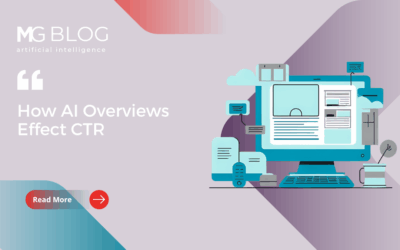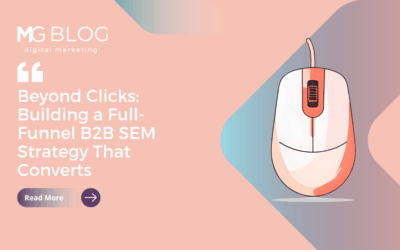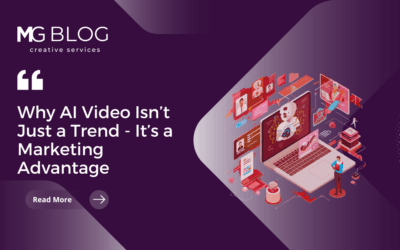Even though the Internet of Things (IoT) is essentially wide open across every industry, there are hot spots that are attracting widespread media attention, major investment, and customers. Growth across the board is going to be immense, but the fastest growing markets are going to be in security and privacy, software platforms, and big data and analytics.
Marketers of B2B solutions would be wise to keep these industries front of mind when developing strategies.
1. Software Platforms
Look for the focus on developing software platforms to expand the potential industrial applications for IoT devices and databases. Mirroring the trend we see in the networking industry in general, IoT is being built on intelligent software-based platforms. Platforms like pre-built connectivity, security, management, and analytics capabilities make it easier for product manufacturers and asset owner/operators to implement new IoT solutions. Software rules, especially cloud services that make it possible for all these IoT sensors to connect and upload data. The real financial opportunities lie in the platforms that can generate insights to enable business improvements through IoT.
2. Big Data & Analytics
It’s all about the data. As more and more sensors and communication between an increasing number of connected devices increase, expect to see demand for data management and analytics shift.
“The next level of sensor data comes from correlating data across multiple sensors at once. Imagine 20 sensors all approaching danger scores at once, but none actually cross the line. Something important is happening: pay attention,” said Dan Graham of Teradata (a Merritt Group client). “An even broader look, and where amazing ROI can be captured (in IoT apps), requires combining sensor data with financial data, warranties, profitability, labor planning, maintenance costs, and other information. When you combine sensor data with existing data, you can gain fresh insights across the organization and make changes that have real business impact.”
The Internet isn’t overwhelming us with data — yet. But it will, just as data flying around the global network is swamping telecommunication companies. Experts say, forget about the cloud, and worry about “the fog,” a term they use for a localized network that would supplement the cloud, as well as satellite and landline systems.
3. Security & Privacy
From sensors to networks, platforms and devices, securing IoT is the most pervasive underlying theme for organizations that have something to lose when it comes to critical business or even personal data. While the idea of someone hacking your break room toaster or refrigerator to gain access to your company’s server sounds silly, hackers have already used refrigerators to launch a cyber attack, on home and company Internet connections.
For another example, look at the automobile industry. Hackers have infiltrated cars with something as simple as a laptop and a $60 piece of tech equipment. Hackers working with the U.S. Military have been able to pop car trunks and start the windshield wipers, cut the brakes or lock them up, and even kill the engine. In a report to Congress, Sen. Ed Markey, D-Massachusetts, also showed how hackers have been able to cause cars to suddenly accelerate, turn, kill the brakes, activate the horn, control the headlights, and modify the speedometer and gas gauge readings. Car experts have also expressed concerns about the rise of navigation and other features that record and send location or driving history information.
Databases from a variety of businesses and services hold and consolidate information about people. The $3 trillion dollar healthcare industry is at a higher risk than most. According to an Identity Theft Resource Centre report, medical companies were one of the most targeted industries in 2013. The report states that 44% of all data breaches that year directly affected the healthcare system. Security experts say stolen patient data is worth more than credit card numbers.
Fraudsters use stolen names, birth dates, policy numbers, diagnosis codes and billing information to create fake IDs to buy medical equipment or drugs that can be resold. Others combine a patient number with a false provider number and file false claims with insurers. In an interview with Reuters, Dave Kennedy, an expert on healthcare security and CEO of Trusted SEC LLC said, “As attackers discover new methods to make money, the healthcare industry is becoming a much riper target because of the ability to sell large batches of personal data for profit. Hospitals have low security, so it’s relatively easy for these hackers to get a large amount of personal data for medical fraud.”
A number of startups are sprouting up to address that concern. Right now a lack of IoT security standards and architecture in general make securing IoT challenging, if not downright scary. Senator Markey’s February 2015 study on hacking and automobiles led to a proposal that would establish federal guidelines for security. Congress will be directing the National Highway Traffic Safety Administration and Federal Trade Commission to set those standards. The study reported that only two manufacturers out of the 16 surveyed currently have the capability to respond to a real-time infiltration of a vehicle’s computer systems.
Without standards it’s impossible to implement security policies. The Industrial Internet Consortium (IIC), an Internet of Things-focused membership group of telcos, research institutes and technology manufacturers, was formed last year. They plan to develop interoperability standards and common architectures to bridge smart devices, machines, mobile devices and the data they create. The Federal Trade Commission (FTC) offers businesses a lengthy list of tips and warnings about IoT security and steps to take to build security into IoT applications. It’s noted that each industry is moving toward establishing some level of awareness and security standards, just in their own way and time. Just as security concerns began with the RFID tags that made the hype of IoT a reality, this same market keeps returning to those sensors and tags.
Experts argue that IoT devices will need an entirely new type of architecture since old security methods won’t work. Because of the immense amount of data that must be both secured, yet quickly accessed by legitimate users, the challenge is daunting. Some experts say IoT can’t be secured, other experts say it’s just going to take time. And that’s exactly what makes IoT security a market to watch in 2015.
While the public and the media may focus on the new apps and devices that so many companies are turning out, without these three markets thriving, IoT can’t and won’t meet its bright and potential future. As IoT evolves and customers begin to adopt the new technology, all while companies continue to innovate, look for rapid growth and movement in smart cities. A recent report by Cisco, a leader in IT solutions, points out that connected cities are one of the top IoT opportunities in which security, data analytics, and software platforms are key.
-
A recent UN report shows that more than 60% of the global population will live in urban areas by 2050, with the urban resident population growing by nearly 60 million per year. This will result in cities accounting for nearly three-quarters of the Earth’s global energy consumption and greenhouse gas emissions while only occupying 2% of the land.
-
Philips did a study and discovered that more than 33% of the roads in the world are lit by equipment and technology that dates back to the 1960’s. They estimate that changing to LED technology could eliminate the need for hundreds of power stations across the globe and save an annual $13.1 billion. Updating lighting systems will employ IoT to make energy smarter and more efficient.
-
Smart Cities will be able to securely use valuable data from the private and public sector to improve processes, systems, and utility delivery to save substantial dollars and improve the quality of life for citizens.
- Cisco predicts that Smart Cities will garner more public engagement, so that citizens are more invested and interested in ways to improve the city. As people understand, through meaningful data, that their cities leave a smaller carbon footprint and present a better economy for business and tourism, they will contribute to ideas to innovate and contribute ideas.
Marketers should also keep these markets in mind when positioning products in order to hit industry hot buttons and capture audience attention.
To learn more about marketing IoT solutions, download our eBook, 7 Marketing Strategies for Cutting Through the IoT Noise.
{{cta(‘0f652e5b-2115-4289-8537-b9c871b1e7af’)}}




